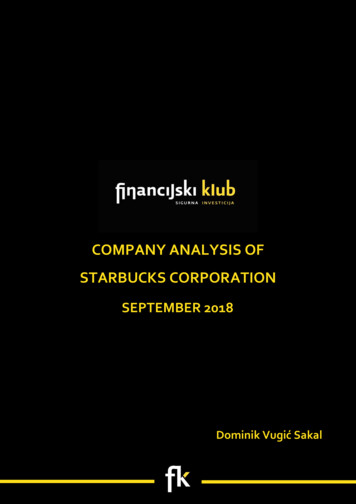
Transcription
COMPANY ANALYSIS OFSTARBUCKS CORPORATIONSEPTEMBER 2018Dominik Vugić Sakal
CONTENTS1. STARBUCKS CORPORATION . 11.1. About the Company . 11.2. The Starbucks Experience . 21.3. Business Segments . 31.4. Financial Results for FY 2017 . 41.5. Starbucks Stock . 52. ANALYSIS OF STARBUCKS EXTERNAL AND INTERNAL ENVIRONMENT . 72.1. Analysing the Coffee Industry with Porter 5 Forces Model . 72.2. Analysis of Starbucks Competitors with Key Performance Ratios . 92.3. SWOT Analysis . 113. DCF AND RELATIVE VALUATION FOR STARBUCKS . 183.1. Revenue Projection . 183.2. Expenses and Cash Flow Projection . 203.3. Calculating Unleveraged Free Cash Flows. 223.4. Calculating Weighted Average Cost of Capital . 233.5. Determining Fair Value per Share with DCF. 243.6. Relative valuation . 263.7. Valuation Summary . 284. REFERENCES . 295. APPENDIX . 305.1. Revenue Growth Assumptions . 305.2. Expense and Cash Flow Assumptions . 315.3. Unlevereged Free Cash Flow Calculation . 325.4. Relative Valuation Calculations . 33
STARBUCKS COMPANY ANALYSIS11. STARBUCKS CORPORATION1.1. About the CompanyStarbucks Corporation is an American coffee company and coffeehouse chain. Starbucks wasfounded in Seattle, Washington in 1971. As of 2018, the company operates 28,218 locationsworldwide. Starbucks locations serve hot and cold drinks, whole-bean coffee, microgroundinstant coffee, espresso, caffe latte, teas including Teavana tea products, Evolution Freshjuices, Frappuccino beverages, La Boulange pastries, and snacks including items such as chipsand crackers; some offerings (including their annual fall launch of the Pumpkin Spice Latte)are seasonal or specific to the locality of the store. Many stores sell pre-packaged fooditems, hot and cold sandwiches, and drinkware including mugs and tumblers; select"Starbucks Evenings" locations offer beer, wine, and appetizers. Starbucks-brand coffee, icecream, and bottled cold coffee drinks are also sold at grocery stores.The first Starbucks location outside North America opened in Tokyo, Japan, in 1996, whilethe Philippines became the second market in 1997. Starbucks entered the U.K. market in1998 with the 83 million USD acquisition of the then 56-outlet, UK-based Seattle CoffeeCompany, re-branding all the stores as Starbucks. In August 2003, Starbucks opened its firststore in South America in Lima, Peru and first store in Russia in 2007. In February 2016,Starbucks announced that it will enter Italy, its 24th market in Europe and the home of theespresso. The first location will open in Milan in October of 2018.In September 2014, it was revealed that Starbucks would acquire the remaining 60.5% stakein Starbuck Coffee Japan that it does not already own, at a price of 913.5 million, while inJuly, 2017, Starbucks acquired the remaining 50% stake in their Chinese venture from longterm joint venture partners Uni-President Enterprises Corporation (UPEC) and PresidentChain Store Corporation (PCSC).
2STARBUCKS COMPANY ANALYSIS1.2. The Starbucks ExperienceStarbucks’ mission “to inspire and nurture the human spirit” requires not just servingexcellent coffee but also engaging customers at an emotional level. As Schultz, Starbucks founder and long-term chairman, explained: “We’re not in the coffee business servingpeople, we are in the people business serving coffe”. Central to Starbucks’ strategy isSchultz’s concept of the “Starbucks Experience,” which centered on the creation of a “thirdplace” somewhere other than home and work where people could engage socially whileenjoying the shared experience of drinking good coffee. The Starbucks Experience combinesseveral elements1:1. Coffee beans of a high, consistent quality and the careful management of a chain ofactivities that resulted in their transformation into the best possible espresso coffee.2. Starbucks’ counter staff—the baristas—play a central role in delivering the StarbucksExperience. Their role is not only to brew and serve coffee but also to engagecustomers in the ambiance of the Starbucks coffee shop. Employees need to becommitted and enthusiastic communicators of the principles and values of Starbucks,which implies treating them as business partners.3. Community relations and social purpose. Schultz viewed Starbucks as redefining therole of business in society: “Every store is part of a community, and we take ourresponsibility to be good neighbors seriously. We want to be invited in wherever wedo business. We can be a force for positive action—bringing together our partners,customers, and the community to contribute every day.”4. Store design is subject to meticulous planning.While every Starbucks store isadapted to its unique neighborhood, all stores reflect some common theme,reflected in the designers’ generous employment of natural woods and richlylayered, earthy colors along with judicious high-tech accessorizing.5. Starbucks’ location strategy of clustering 20 or more stores in each urban hub isviewed as enhancing the experience both in creating a local “Starbucks buzz” and infacilitating loyalty by Starbucks’ customers.1Grant, R. (2016) Contemporary strategy analysis, Ninth edition. United Kingdom, Wiley.
3STARBUCKS COMPANY ANALYSIS1.3. Business SegmentsStarbucks has four reportable operating segments: 1) Americas, which is inclusive of theU.S., Canada, and Latin America; 2) China/Asia Pacific (“CAP”); 3) Europe, Middle East, andAfrica (“EMEA”) and 4) Channel Development. They also have several non-reportableoperating segments, which are reffered to as All Other Segments. Americas, CAP, and EMEAsegments include both company-operated and licensed stores. Americas segment is themost mature business and has achieved significant scale. Certain markets within CAP andEMEA operations are still in the early stages of development and require a more extensivesupport organization, relative to their current levels of revenue and operating income, thanAmericas operations. Channel Development segment includes roasted whole bean andground coffees, premium teas, a variety of ready-to-drink beverages and other brandedproducts sold worldwide through channels such as grocery stores, warehouse clubs,specialty retailers, convenience stores and U.S. foodservice accounts.as %of Total9.496 55,78%7.528 44,22%17.024 100,00%AmericasCompany-operated storesLicensed storesTotalas %of Total4.816 60,24%3.179 39,76%7.995 100,00%CAPas %of Total496 15,69%2.665 84,31%3.161 100,00%EMEAas %of Total4 13,79%25 86,21%29 100,00%OtherTable: Number of company-operated stores and licensed stores per segmentSource: Second quater 10-Q, 2018AmericasCompany-operated storesLicensed storesFoodservice and otherTotal revenue13.996,41.617,339,015.652,7Table: Revenue by segmentsSource: 10-K, 2017as %of 40,2as %of 13,7as %of ,6as %Channelof Total Dvlpt.41,84%/0,55%/57,61%/100,00%2.008,6
STARBUCKS COMPANY ANALYSIS41.4. Financial Results for FY 2017Starbucks results for fiscal 2017 continued to demonstrate the strength of its global businessmodel, and its ability to successfully make disciplined investments in its business andpartners. Consolidated total net revenues increased 5% to 22.4 billion, primarily driven byincremental revenues from 2,320 net new store openings over the past 12 months and a 3%growth in global comparable store sales. Consolidated operating income declined 37million, or 1%, to 4.1 billion. Operating margin declined 110 basis points to 18.5%, primarilydue to increased partner investments, largely in the Americas segment, restructuring andimpairment charges and the absence of the 53rd week, partially offset by sales leverage.Earnings per share of 1.97 increased 4% over the prior year earnings per share of 1.90.Americas revenue grew by 6% to 15.7 billion, primarily driven by incremental revenuesfrom 952 net new store openings over the last 12 months and comparable store salesgrowth of 3%, which was driven by the success of premium food offerings coupled withinnovation across coffee and tea beverage platforms. In China/Asia Pacific segment,revenues grew by 10% to 3.2 billion, primarily driven by incremental revenues from theopening of 1,036 net new stores over the past 12 months and a 3% increase in comparablestore sales. Starbucks continues to execute on its strategy of repositioning the EMEAsegment to a predominantly licensed model. As a result of this strategy, EMEA revenuesdeclined 111 million to 1.0 billion, or 10%, primarily driven by the absence of revenuerelated to the sale of Germany retail operations in the third quarter of fiscal 2016 andunfavorable foreign currency translation. Channel Development segment revenues grew by4% to 2.0 billion, primarily driven by increased sales through international channels andsales of packaged coffee, foodservice and single-serve products.
5STARBUCKS COMPANY ANALYSIS 25,00019.80% 22,387 21,316 19,163 20,00019.60%19.57%19.40% 16,44819.20%in mil 15,00019.00%18.73%18.80%18.79% 10,00018.60%18.47% 5,000 2,068 2,757 2,818 2,88518.40%18.20%18.00% 017.80%20142015RevenuesNet earnings20162017Operating marginGraph: Starbucks financial performanceSource: Starbucks 10-K, 20171.5. Starbucks StockThe following graph depicts the total return to shareholders from September, 2013 throughSeptember, 2018, relative to the performance of the Standard & Poor’s 500 Index, theNASDAQ Composite Index and the Standard & Poor’s 500 Consumer Discretionary Sector, apeer group that includes Starbucks. All indices shown in the graph have been reset to a baseof 100 as of September, 2013, and assume an investment of 100 on that date and thereinvestment of dividends paid since that date.
6STARBUCKS COMPANY ANALYSIS 220 200 180 160 140 120 100 P 500Oct-16Apr-17Oct-17Apr-18S&P Consumer DiscretionarySource: Yahoo FinanceDespite the stock s relative bad performance in comparison with the three indexes, it stillreturned more than 50% to its shareholders during the five year period. For a period of timethe stock greatly outperformed the indexed, until news in April 2017 of Howard Schultzsteeping down as CEO and president, with Kevin Jonhson replacing him.At the current price of about 56, the stock s PE ratio stands at about 18, below 25.64, itseight year average. Starbucks 5-year market beta is 0.56 which shows that its stock is lessvolatile, and thus risky, than the market as a whole. This could be due to Starbucks being amature company with a stable and growing base of customers, but it could also be due toeconomic expansion happening in most of the world in this period, preventing the reductionin demand for company s products.
STARBUCKS COMPANY ANALYSIS72. ANALYSIS OF STARBUCKS EXTERNAL AND INTERNALENVIRONMENT2.1. Analysing the Coffee Industry with Porter 5 Forces ModelRivalry Among CompetitorsThe specialty coffee market is intensely competitive with respect to product quality,innovation, service, convenience and price. The industry is mature and growth rate has beenmoderately low, which causes the intensity of competition among the companies to bemoderately high due to all of them seeking to capture market share from established firmslike Starbucks. The industry has a monopolistic competition, with Starbucks having thelargest markets share and its closest competitors also having a significant market share,creating significant pressure on Starbucks. However, looking from the outside in, Starbuckshas no clear competition that can truly rival it in size or revenue on a global scale. Most ofStarbucks’ competitors are regional or operate primarily in a different industry. Inter-firmrivalry is seen quite often in the specialty coffee industry with price discounting amongcompetitors. One example of this is seen with the offering of low-cost coffee from the largerestaurant chains Dunkin’ Bra
people, we are in the people business serving coffe”. Central to Starbucks’ strategy is Schultz’s concept of the “Starbucks Experience,” which centered on the creation of a “third place” somewhere other than home and work where people could engage socially while enjoying the shared experience of drinking good coffee. The Starbucks Experience combinesFile Size: 1020KBPage Count: 36
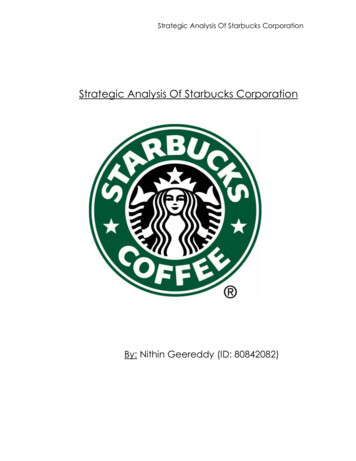

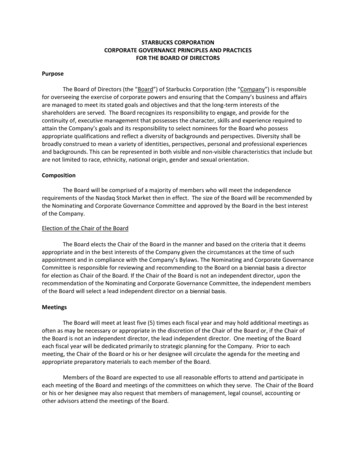
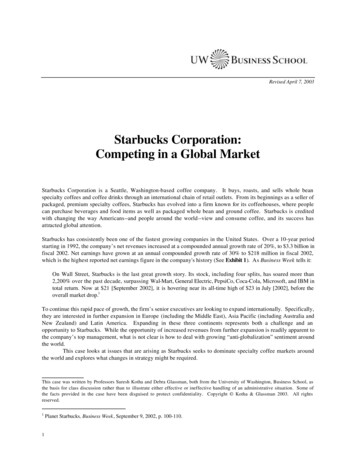

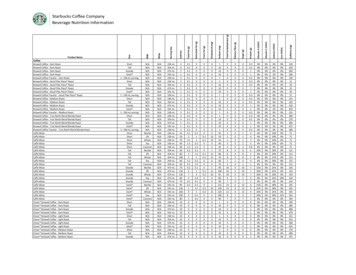
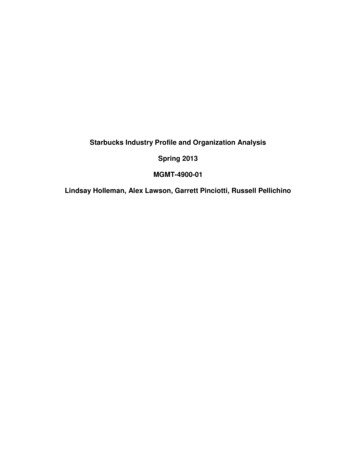

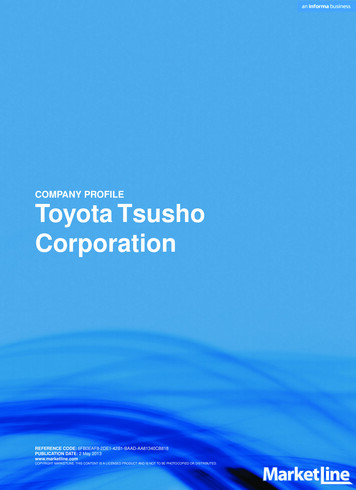

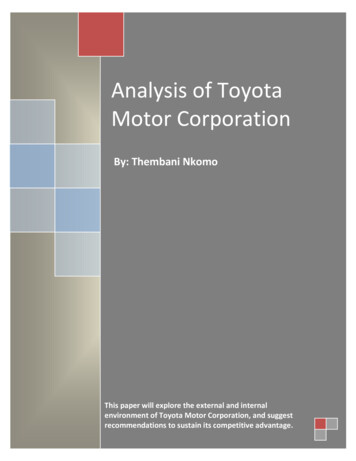
![Shareholders’ Agreement of [Company name] company. 1 .](/img/1/startup-founders-sha-sample.jpg)